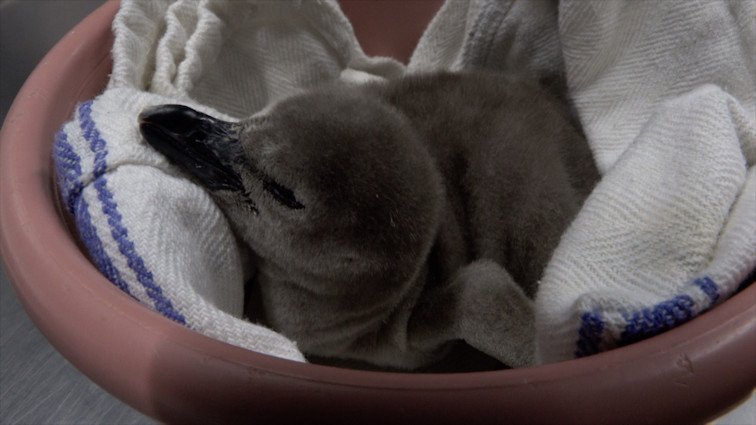Egg-cellent news: Fuzzy Humboldt penguin chick hatches at Oregon Zoo

PORTLAND, Ore. (KTVZ) — A tiny Humboldt penguin chick came out of its shell recently at the Oregon Zoo.
“The little beak came out first,” said Marcus Jason, who oversees the zoo’s penguin habitat. “Everything went well with the hatching, and the chick’s parents are doing a great job caring for it in their nest.”
The young penguin began “pipping” (when a chick’s beak breaks through the membrane of its shell) Saturday, March 2 and emerged early on Monday, March 4. Humboldt penguins typically hatch 40 days after eggs are laid, and according to Jason, it takes two or three days from when they pip to when they’re fully hatched.
The fluffy, pint-sized new arrival — which is small enough to fit in the palm of your hand — is the 194th Humboldt chick to hatch at the zoo since it began breeding the threatened species in the 1980s.
It will be nearly as tall as its parents by the summer, but easy to tell apart by its plumage: Young Humboldts are grayish-brown all over and don’t develop their distinctive black-and-white tuxedo markings for a couple years.
Once it’s waddling and swimming on its own, the chick will begin to explore the rugged terrain of the zoo’s Penguinarium, which simulates the endangered birds’ native habitat along the rocky coast of Chile and Peru. Until then, Marcus says, the young bird will be keeping cozy inside its nest box, growing strong on a diet of regurgitated “fish smoothie” provided by its devoted parents.
Humboldt penguins, which live along the South American coastline off Peru and Chile, are classified as “vulnerable” by the International Union for Conservation of Nature, and in 2010 were granted protection under the U.S. Endangered Species Act.
Of the world’s 17 penguin species, Humboldts are among the most at risk, threatened by overfishing of their prey species, entanglement in fishing nets, and breeding disruption due to commercial removal of the guano deposits where the penguins lay their eggs. Their population is estimated at 12,000 breeding pairs.